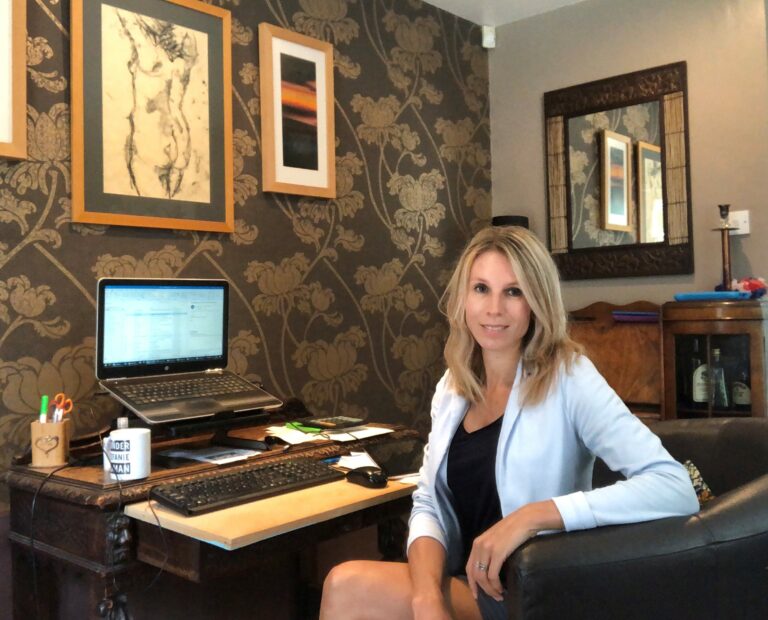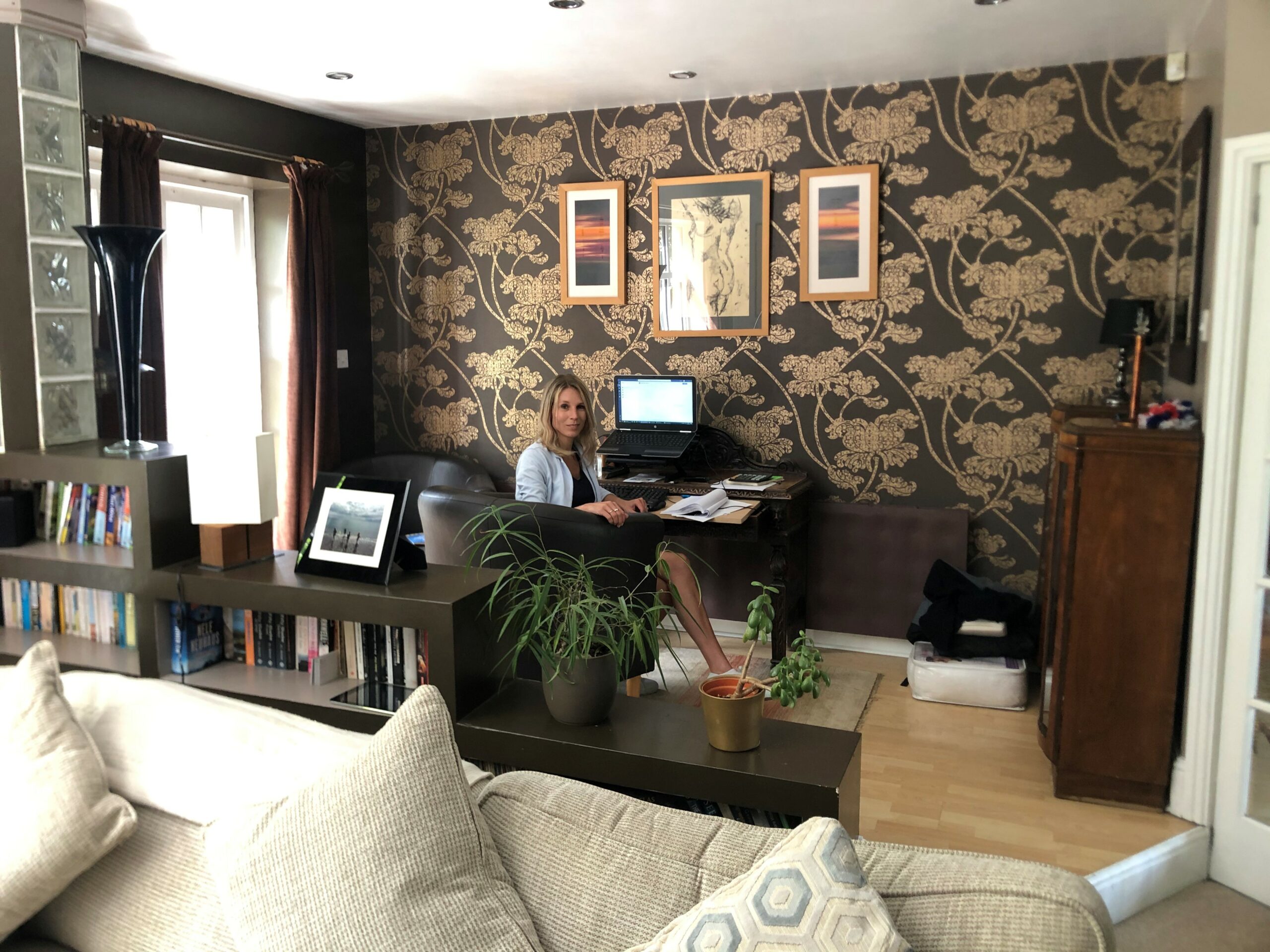Stefanie Hopkins is the founder and managing director of Faith PR.
The Brighouse-based PR agency works with the likes of Approved Food, Thornton & Ross, Twisted Automotive and World Kinect Energy Services.
Here she gives us an insight into how she works from home.
1. Where in the house do you work?
On the ‘stage’, a slightly raised area in our lounge that has its own little bureau desk. My husband had to fashion a shelf out of an old piece of wood for me to rest my keyboard and mouse on though as it’s not big enough otherwise!
It’s the only place in the house I can get decent wi-fi and some relative peace and quiet. The kitchen has been taken over for home schooling and homework and my former home office is now the kids’ playroom.
2. Paint a picture for us of the view from your window
I can see our front garden; the lawn, trees on the perimeter and at the moment, there are some lovely peonies in bloom. Occasionally the resident squirrel nips across the lawn. The only downside is that the sun moves to the other side of the house in the afternoon so it can feel quite chilly.
3. If you have one, can you talk us through your home-working daily routine?
It’s not vastly different, just without the stress of the school run and getting everyone out of the house on time.
We have a daily team check-in call at 9.30am where we go through that day’s tasks and have a bit of a general catch-up. Then the day is taken up with client Zoom meetings and calls with work in between.
I wish I could say I have a proper lunch hour (lead by example and all that) but I usually have time for a quick 10-minute break then it’s back to it.
The day is interspersed with my two children wandering in for various ‘urgent’ things, like requesting more screen time – oblivious to the fact I’m on a client call.
I’m lucky that my husband has been able to take on most of the home-schooling, allowing me to concentrate on the business.
I try to finish around 5.30-6pm and go for a run but usually end up logging back on to finish ‘bits’ off which invariably can be another hour or so.












